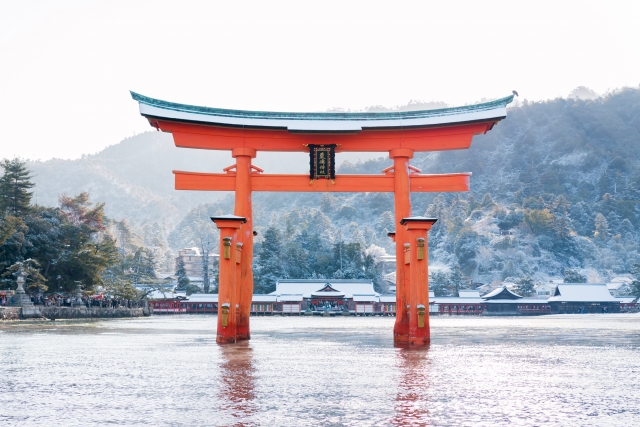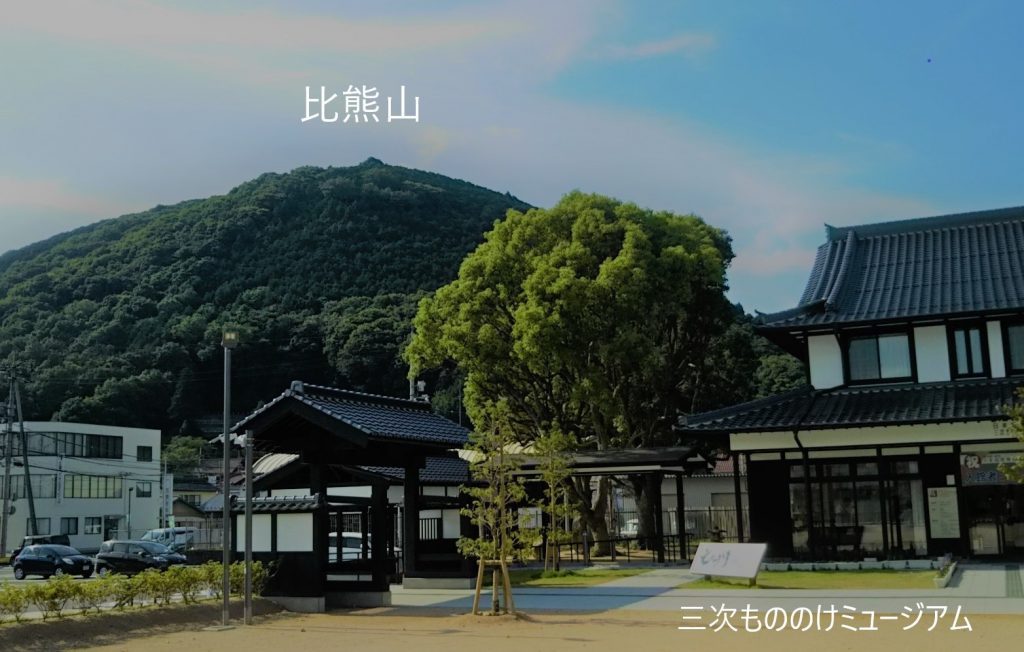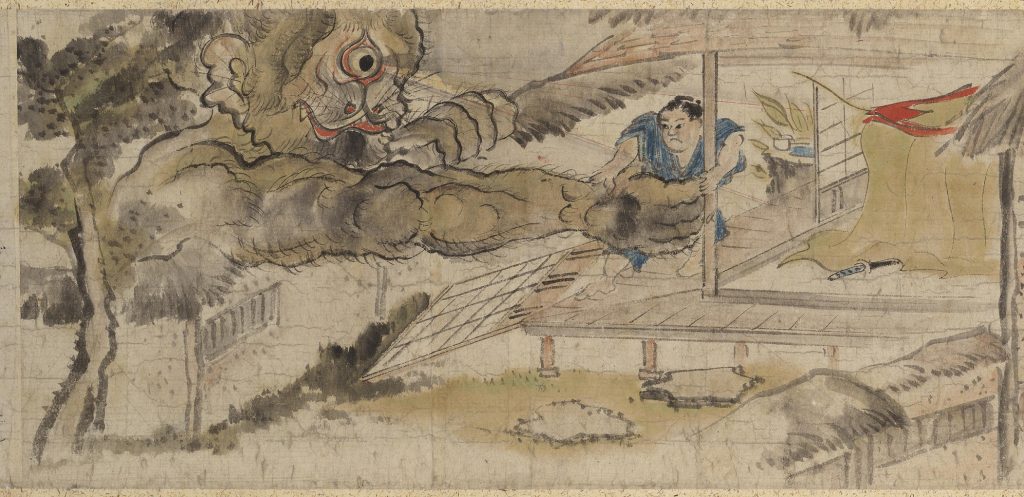During these particularly harsh winter months, have you decided as to where you might take a trip? This time we will be briefly introducing the tale of the Ino Mononokeroku of Hiroshima Prefecture’s Miyoshi City. Hiroshima, is not only home to popular tourist destinations such as the Itsukushima Shrine and Onomichi, and hot gourmet foods such as grilled oysters and okonomiyaki, but also visitable yokai spots that provide the backdrop for the stories themselves.
 Itsukushima Shrine in winter
Itsukushima Shrine in winterThe events of this story occurred in 1749, the middle of the Edo period. Our protagonist, a 16-year-old boy named Ino Heitaro, lived together with his younger brother and his retainer. What happened to him*1?
The Fearless, the Brave, Heitaro!
It all began with a test of courage between Heitaro and his neighbor, a former sumo wrestler, Gonpachi. In the middle of the night on May 26 the two climbed Mt. Higuma, and were playing Hyakumonogatari*2 in front of an old gravestone on Senjojiki*3. Nothing supernatural occurred once they had finished so they both descended back down the mountain. The fearless Heitaro could never have imagined in his wildest dreams the yokai turmoil that would later follow.
 Mt. Higuma (courtesy of the Miyoshi Mononoke Museum official website)
Mt. Higuma (courtesy of the Miyoshi Mononoke Museum official website)
The Yokai Turmoil Begins
It was the night of July 1, about two months since the test of courage. Heitaro, who was just about to go to sleep, noticed that the sliding door leading to the garden had suddenly lit up. Panicking about whether something had caught fire, Heitaro scrambled to open the door but no matter how hard he tried, the door would not move an inch. Pulling with all of his might, he tore the door down off its frame.
Finally able to survey the situation in the garden, he saw that there wasn’t the slightest hint that a fire had occurred. Instead, there was a giant monster, so huge its head broke through the clouds, looking down at Heitaro from over the garden wall. The monster had one eye, which blazed like the sun, and, extending its hairy arm, it grabbed Heitaro.
Heitaro desperately clung to a nearby post as the monster began to pull at him with a fearsome strength. Fortune was on Heitaro’s side as the kimono he was wearing began to rip and tear at the shoulder and he was able to somehow wriggle his way out of the grasp of the monster. Heitaro quickly picked up his sword, turned back to the veranda and with a cry of, “Monster, I’ll vanquish you!” the monster’s giant man-like body began to shrink and fled under the wooden decking. Heitaro stabbed between the gaps in the floorboards with his sword but nothing happened, and before long, the presence disappeared.
 July 1: Heitaro is grabbed by the big one-eyed monster
July 1: Heitaro is grabbed by the big one-eyed monster
In light of this incident, the retainer lost all nerve, quit his job and left the house. Heitaro’s younger brother was taken in by relatives leaving Heitaro living alone inside the house. Though he was warned many times by his relatives telling him that he too should leave the house, Heitaro refused to run away saying, “To flee from the monster in fear would disgrace my name as a samurai.”
So, what was the fate of Heitaro? The conclusion will be told in the next installment. We hope you are looking forward to it.
[Footnotes]
*1 In this article we briefly introduce the plot of the Ino Mononokeroku Picture Scroll (Hotta private collection).
*2 Hyakumonogatari was a popular game played during the Edo period, which involved telling ghost stories. People would gather in a circle and take turns telling ghost stories. It was said that once the hundredth tale had finished being told something supernatural would occur.
*3 Senjojiki is a small area of land on Mt. Higuma, where the keep of a 16th century castle once stood.
[References]
Ino mononokeroku, trans. Natsuhiko Kyogoku, ed. Masao Azuma, KADOKAWA Sophia Bunko, 2019.
Kuramoto, Shirou. Yokai no Shozo—Ino Budayu Boken Emaki (Portrait of the Yokai—Ino Budayu Adventure Picture Scroll), Heibonsha, 2000.
Miyoshi Mononoke Museum Official Website, December 24, 2019.
We would like to take this opportunity to thank the Miyoshi City Board of Education and Yumoto Koichi Memorial Japan Yokai Museum (Miyoshi Mononoke Museum) for the images and supervision they provided for this article.
Note: This article was amended on February 14, 2020.
We are accepting applications for writing tourism and cultural articles in Japanese and/or English, multilingual translations and other services. For inquiries, please contact us:
Tel: (+81) 3-6902-9030
Email: info@omega-com.co.jp
Note: Unauthorized copying and replication of the contents of this site, text and images are strictly prohibited. All Rights Reserved.
